As September rolls around, Bordeaux is always a flurry of activity. The harvest in Bordeaux, or le vendage, is one of the most critical parts of the entire wine making process. It’s the time when the winemaker feels they’ve achieved the perfect balance in the vineyard.
The vineyards are suddenly full of vendanguers (literally grape pickers) and getting stuck behind tractors puttering along is inevitable along Bordeaux’s roads. It’s the busiest time of the entire wine making year for the châteaux. Wondering if the harvest is a good time to visit Bordeaux and what to expect? Let’s take a look inside the Bordeaux wine harvest.
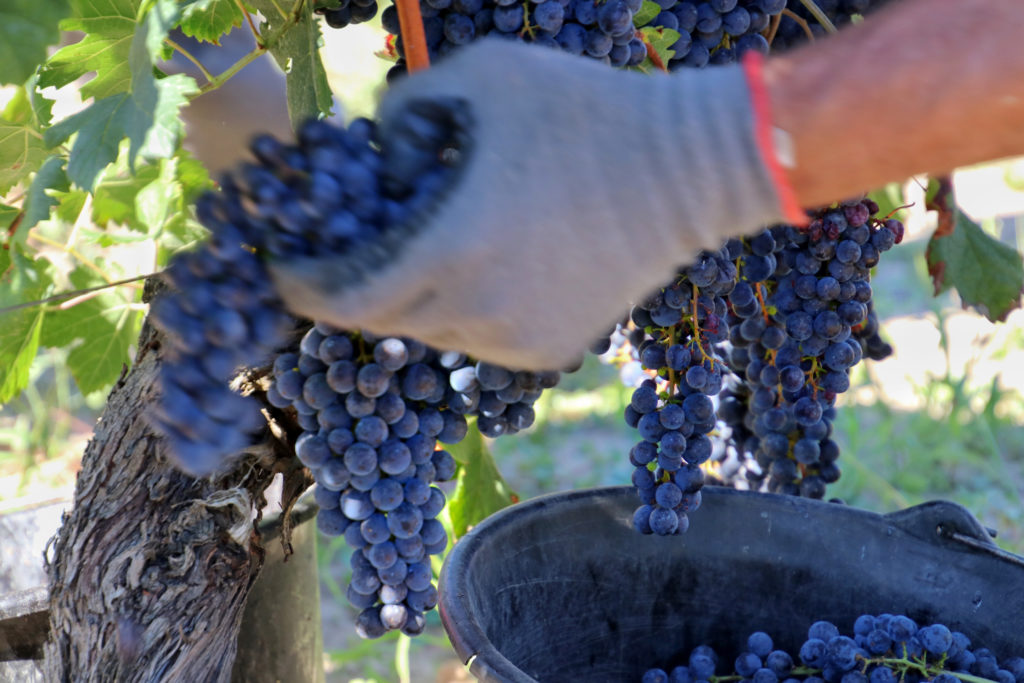
When are Bordeaux Grapes Harvested?
The exact timing of the wine harvest is determined by the ripeness of the grapes. Generally in Bordeaux, the grape harvest is in September. The grape harvest season can run from late August through October depending on the varietal.
Bordeaux does have white wine grapes and these are ready for harvesting first. The grape harvest for Bordeaux’s white wine grapes can begin as early as the end of August.
Of Bordeaux’s grape varietals, Merlot grapes are ready to harvest before the Cabernet Sauvignon grapes. These two main grape varietals found in Bordeaux blends do not grow or ripen at the same rate, even when they’re planted on the same wine estate. Merlot and Cabernet Sauvignon always have separate harvest dates.
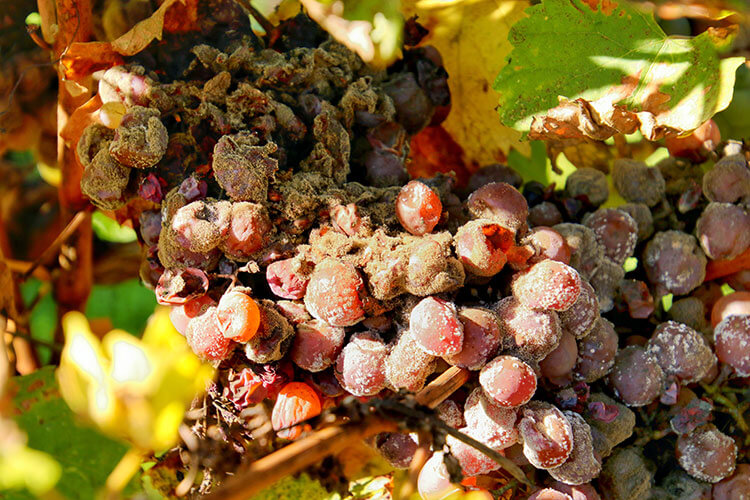
The very last grapes to be harvest in the Bordeaux wine region are the botrytis affected grapes for Sauternes wine. Typically botrytis doesn’t start occurring until in September and can last well in to October. Just the right conditions are needed and the botrytis grapes will be harvested multiple times to achieve the perfect levels.
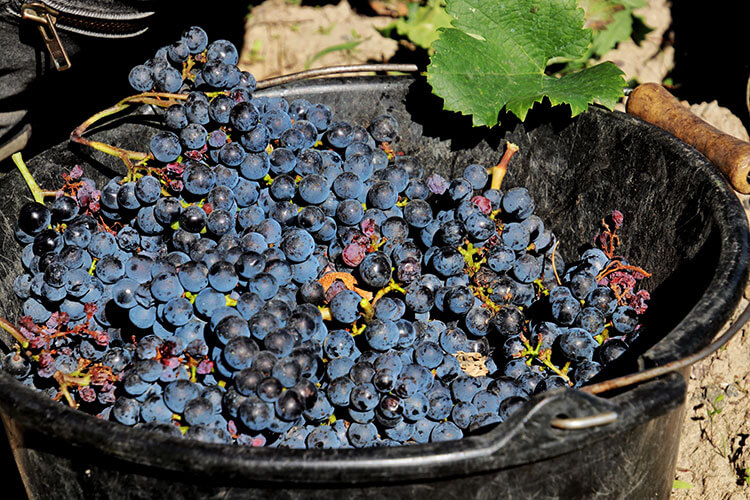
Le Vendage: The Wine Harvest in Bordeaux
Once the winemaker decides the date that they’ll start their harvest, teams that have been hired seasonally for fruit picking jobs in the vineyards are notified. It’s labor intensive work done by expert grape pickers known in French as vendanguers.
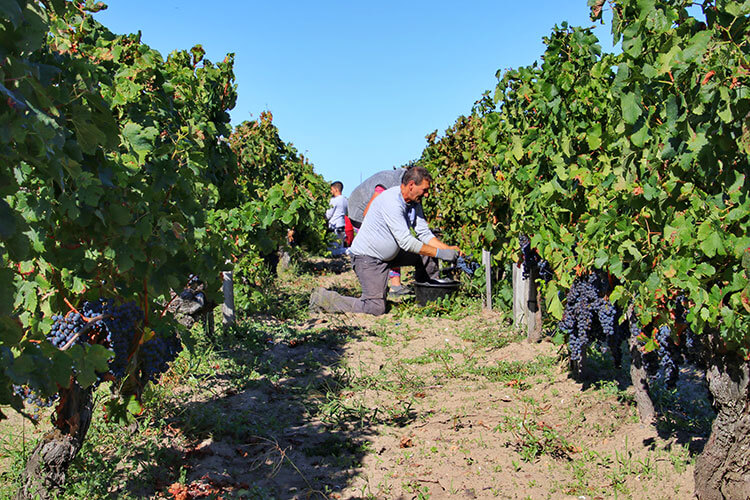
While some machine harvesting does happen in Bordeaux, the majority of Bordeaux grapes are picked by hand. It’s backbreaking work as the vendanguers squat or kneel to get close down to the ground with the grapes. Each bunch is meticulously inspected, and even individual grapes that aren’t of the highest quality will be cut off the bunches and left on the ground.
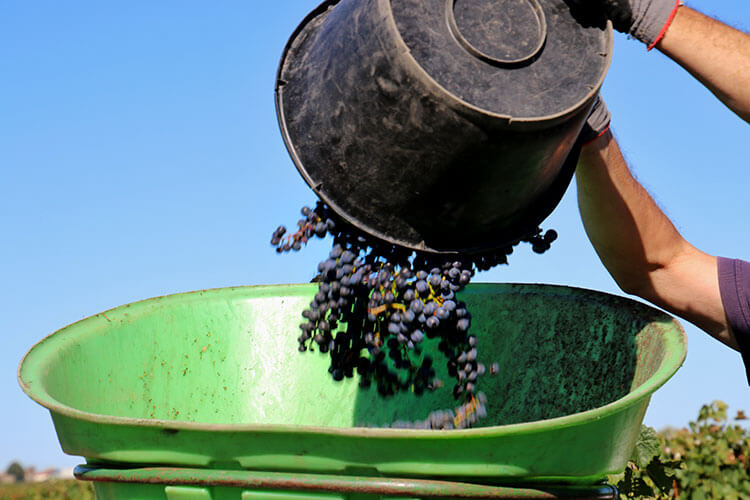
The bunches are placed in small baskets or bushels by the pickers. Then the grapes are collected by porters that continuously makes the rounds wearing a sort of backpack called a hotte. Every couple of minutes the pickers empty their small baskets in to the hotte.
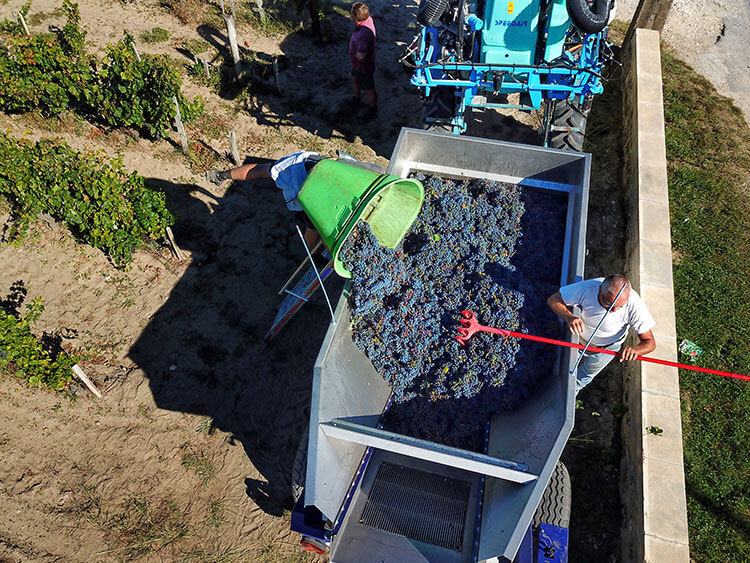
Les porteurs transport the grapes down the rows and to the awaiting truck. They’ll climb up and down a ladder countless times during the harvest. And they use their entire body to be able to toss the hotte full of grapes into the truck.
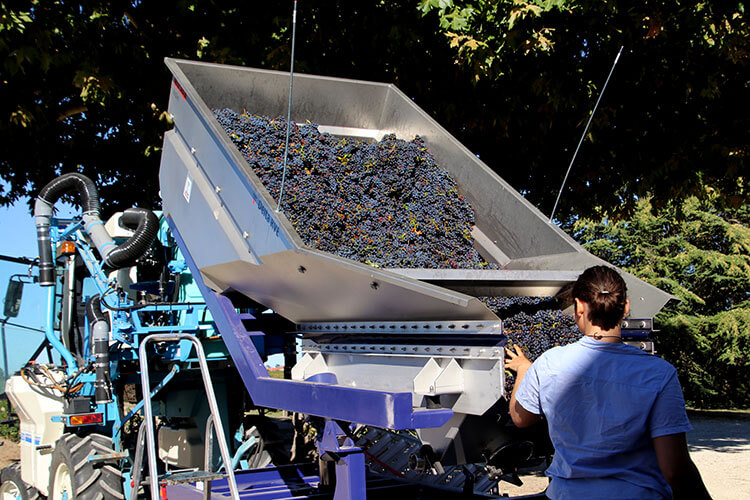
Once the truck is full, it is transported immediately to the winery. It’s crucial to maintain the freshness of the grapes and they are immediately emptied into the destemmer machine.
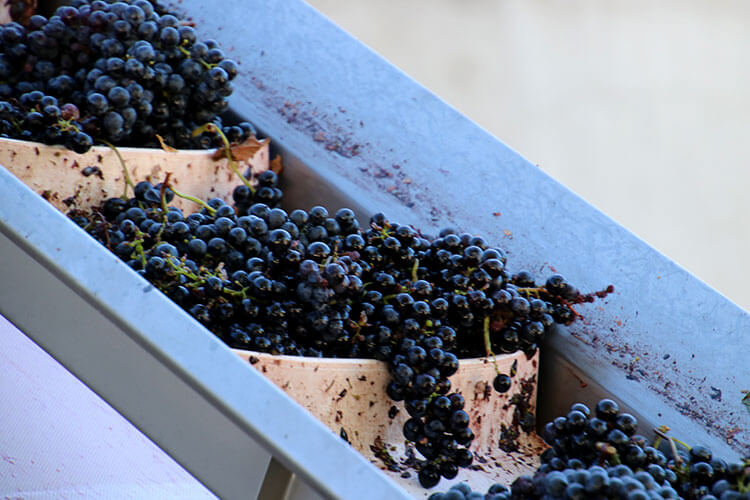
The grapes travel on a conveyor belt into the destemmer machine. The machine separates the grapes from the stems.
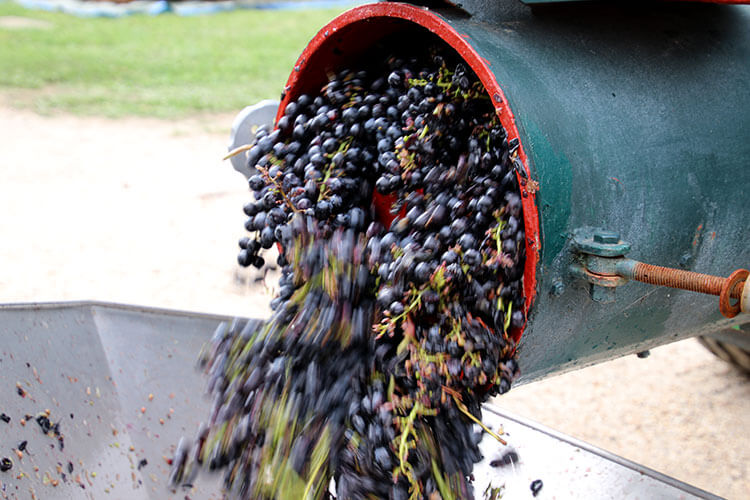
The separated grapes come out one side of the machine and empty onto another conveyor belt. The stems and leaves shoot out the other side of the machine and are collected typically to be used as fertilizer in the vineyard.
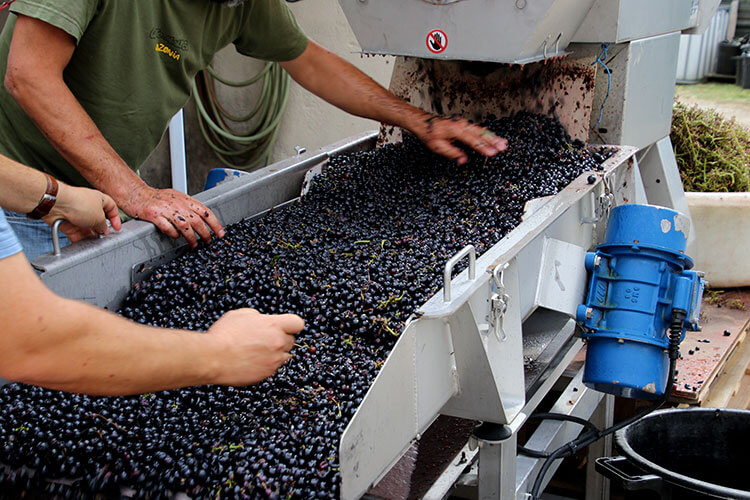
The grapes are inspected by the winemaker as any leaves and stems that made it through the destemmer are quickly plucked out.
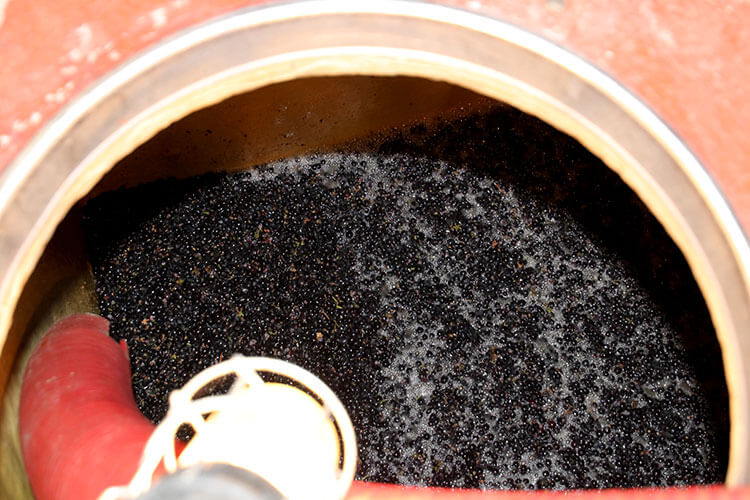
The grapes travel directly into the vats where they are crushed. The fermentation will take place over several months in the vats, which can be wood, stainless steel, concrete or a combination of these.
Punching down will take place over the fermentation and eventually the wine is ready to be transferred to the barrels to age for up to 24 months.
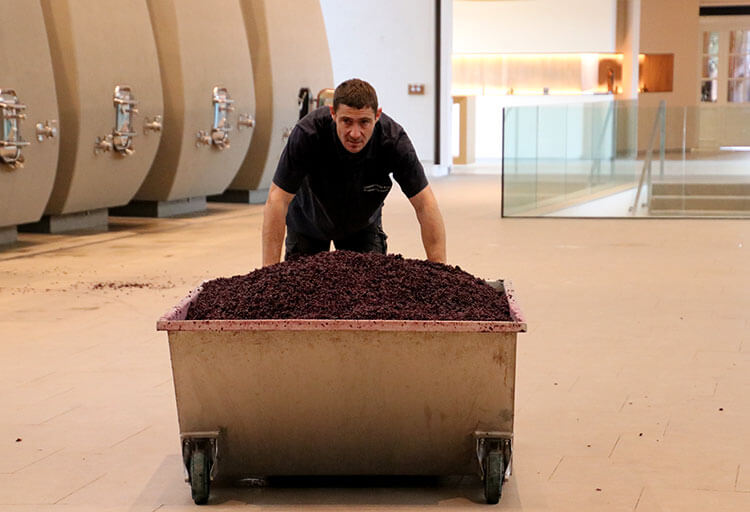
Of course, once the wine has been pumped into the barrels, the vats must be cleaned. The pomace, or the solid remains from the grapes that includes the skins, seeds and any stems that went in to the vat, is shoveled out and often used as fertilizer.
What to Expect When Visiting Bordeaux Châteaux During Harvest
Bordeaux during harvest is a magical time, but you should also realize that it is also when châteaux are at their busiest. It’s a labor intensive process that can last from a few days to several weeks depending on how many hectares of vines the château has. It’s also a stressful time when the entire year’s work depends on the success of the harvest in order to produce a quality vintage.
For these reasons, many Bordeaux châteaux do not accept visits during the harvest period. However, times have been changing and as Bordeaux continues to develop wine tourism within its châteaux, many now have a dedicated individual or teams that work exclusively to welcome guests for visits and tastings.
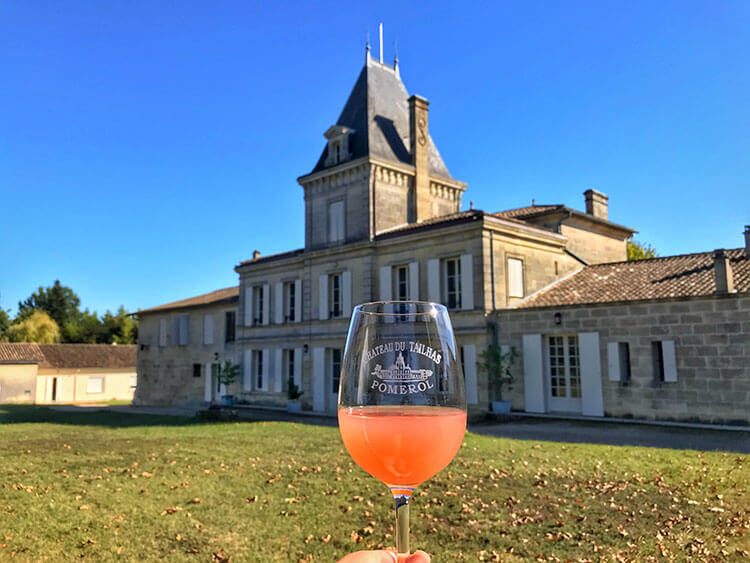
If you do book a visit at a Bordeaux château during harvest, you might be lucky enough to be offered a taste of the freshly crushed grape juice. For the first 2-3 hours after crushing Merlot grapes, the juice actually more closely resembles watermelon juice in color. The deeper color will develop over the fermentation process while the skins lend their color to the wine.
If you want to take part in the harvest as a picker, realize that it is a labor intensive job sure to leave every bit of your body sore at the end of the day. Grape harvesting is not a touristic activity, and you definitely will not find anywhere to stomp grapes a la that episode of I Love Lucy.
You can find grape picking jobs by keeping an eye on social media. Many châteaux post on their Facebook and Instagram pages toward the end of July and beginning of August when they are looking to hire vendangeurs. There are also tons of listings in the classifieds sections of regional papers like the Sudouest.
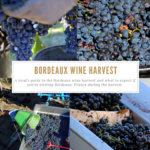
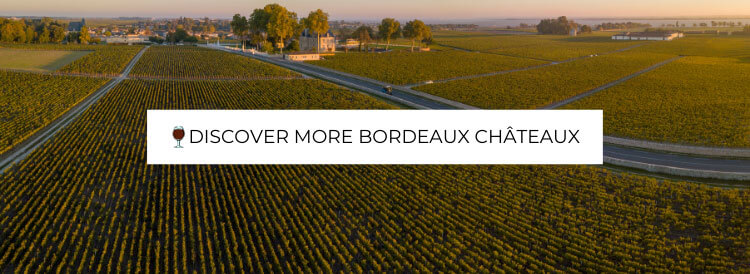
Leave a Reply